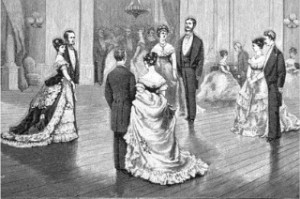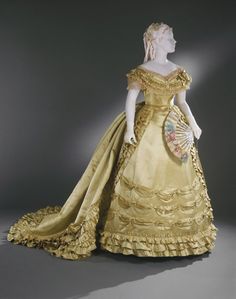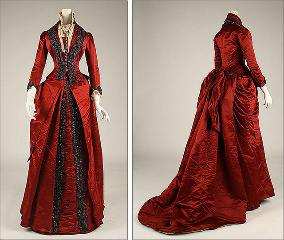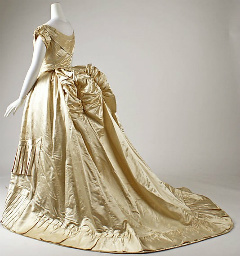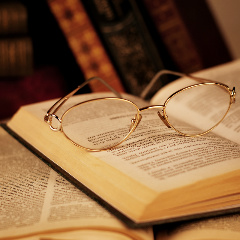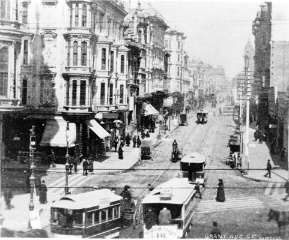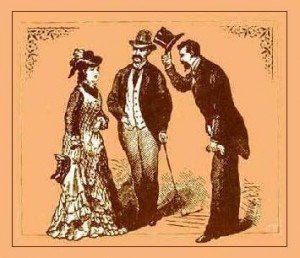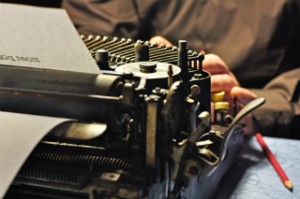Let’s take a look at men’s fashion during Kye’s and Chance’s era. The 1870s in men’s fashion was marked by “sobriety and understated style.” Nobody was making fashion waves during that time. In 1871, a tailoring journal remarked “Gentlemen dress as quietly as it is possible to do and there are no extremes in dress.” Kye, especially, would have dressed to fit in. Chance would have kept up the latest fashion, but probably in the most expensive fabrics and the most daring styles.
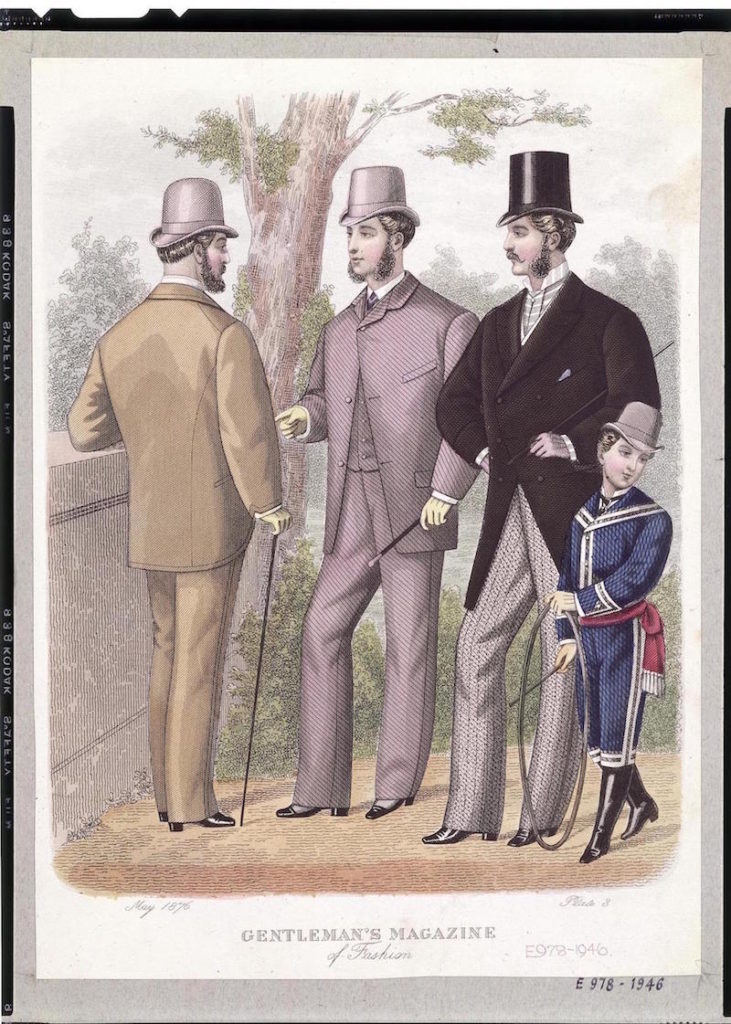
The overall men’s silhouette was slimmed down from the boxy, oversized jackets of the 1860s, with a closer fit and a plain shirt instead of the pleated and heavily starched shirt of the previous decade. This would have made the Wang brothers happy, although it probably meant the laundry bill went down. Formal daywear required a frock coat with a waist seam and a full skirt. In the first half of the decade, the trend was for a shorter frock coat with a hemline well above the knee. Men could also opt for the less stuffy morning coat, a cutaway jacket with a waist seam. This coat, either single- or double-breasted, fastened with three or four buttons and might be bound with silk braid “for an elegant finish.” This was a versatile coat and could appear formal if sewn of dark cloth and paired with gray trousers, or more relaxed if made of tweed. Evening occasions called for a formal black tailcoat (with knee-length tails), a matching double-breasted waistcoat, starched white shirt and bowtie, and black trousers, usually with braid down the outer side seams.
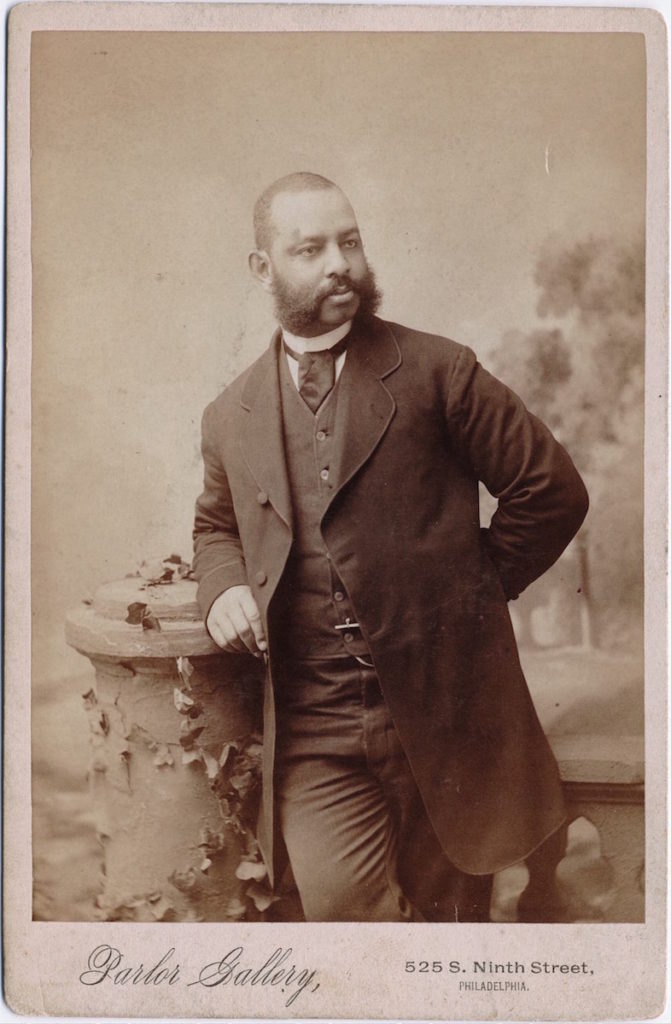
Among the working classes (and probably Kye), the sack coat was becoming more popular. The jacket, with no waist seam, was usually paired with matching waistcoat and trousers and worn with a plain white shirt with a turned down collar and a four-in-hand tie. This was undoubtedly the forerunner of the modern three-piece suit. Chance may have worn a sack coat for lounging around the house. Lapels were either square at the top or cut to form an open “V.” The crease of the turnover was longer than it had been in a while. Sleeves were nearly the same width at elbow and wrist and usually made with cuffs. Trousers were of medium fit and worn more closely fitted to the leg. At the bottom they had a slight gaiter formed by short openings at the bottoms of the side seams. The most popular form of outerwear during the 1870s was the Chesterfield coat, cut knee-length and edged with braid and silk velvet facings. The top frock was an outer garment cut along the same lines as the frock jacket beneath. Inverness and Ulster coats featured capes, sometimes detachable. For sporting events, the double-breasted reefer jacket was becoming popular.
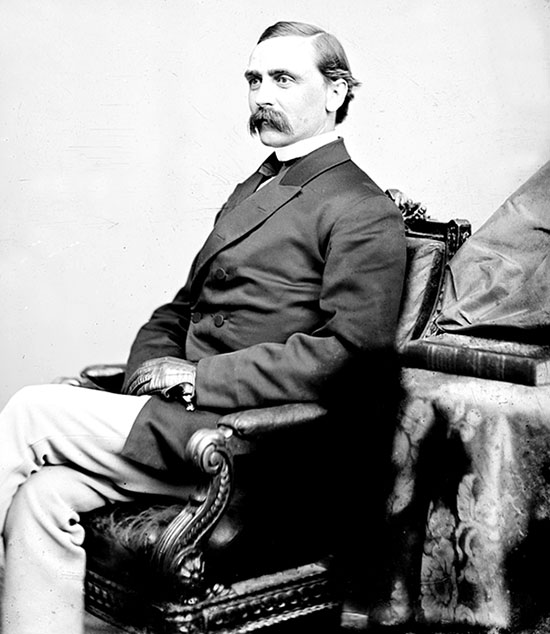
The top hat was the most formal of headgear, worn with frock coats, fancier morning suits, and evening attire. A bowler hat was more often seen with morning and sack suits. Accessories and jewelry were “simple and elegant,” such as a four-in-hand necktie, a silk cravat fastened with a stickpin, and a gold watch chain strung across the waistcoat. Men wore their hair shorter than previously and kept it neatly parted. A clean-shaven face was rare, so Chance would have attracted even more attention than usual. Most men wore full “muttonchop” whiskers or a trim moustache like Kye’s. According to fashion historian Jayne Shrimpton, “the average middle-class businessman carefully avoided exaggerated or effeminate fashions. With a gold watch chain displayed prominently across his waistcoat front, and bushy mutton-chop whiskers or a beard lending an air of authority, the sober-suited Victorian male aimed for a respectable, efficient, industrious image.”
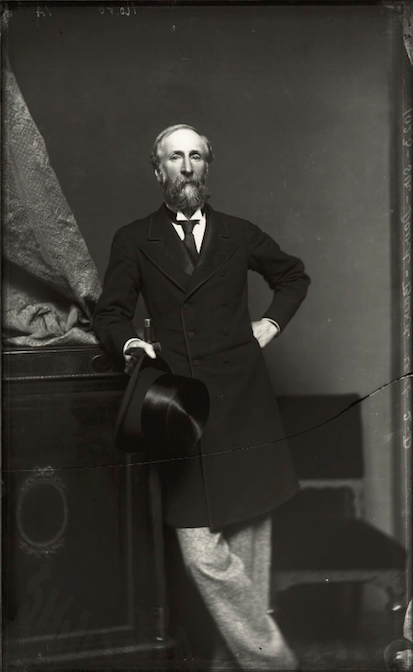
Overall, the look of the 1870s would have suited Chance, being designed to show off a manly figure and display the rich material and elegant accessories that marked the cream of the upper crust. Kye would have been happier in a sack suit, assuming Chance let him out of the house in one. Likely for working on his “filthy contraptions” or blacksmithing. Otherwise, he’d have been bullied into the proper attire for whatever occasion they were attending. What do you think of the 1870s styles? Should they come back into fashion or remain solidly in the past?
As a writer of historical fiction, I’m always researching. It’s not just the big picture, either. Sure, I need to know the basics of life in the late 1800s, but I also need to know if a certain slang term was in use at that time, or what an expensive evening dress might have looked like.

Let’s look at the research process a bit, then. Your first step, of course, will be Google–maybe even Wikipedia. Just don’t make the mistake of thinking the latter is always correct. Remember that anyone can edit a Wikipedia article and write whatever they want. But Google will always net you a few gems you’ll want to bookmark and use over and over.
The trick to any search engine is to know your keywords. If you type “life in the late 1800s,” you’re going to get zillions of vague websites that don’t really tell you much at all. You need to narrow your search until you’re getting those laser-focused, scientifically-researched websites that will truly teach you what you need to know for your story. “Slang terms of 1870” is far better than “Slang in the Old West,” which is better than “Old-fashioned language.”
Your goal with Google (or whatever search engine you use) is the sort of website that reads like a scientific paper (“The Chinese as Medical Scapegoats: 1870-1905”) instead of a vague “The History of Chinatown.” In 99% of the cases, the more narrow the focus, the better the historical information included. Figure out exactly what you want to learn, then use that question as your search keywords.
Another good resource is the photograph site. Do the same sort of search, but add “photographs” to the keyword string. This will give you actual images of the period you’re researching, which you can use in your descriptions of setting, clothing, and even in character creation. Pinterest usually has some interesting photos, but they’re not likely to have the best descriptions of the images, the way a historical website will.
I’ve found that pretty much anything I’m interested in will have someone else who’s interested enough to create a website (or at least a blog entry). It’s rare that I can’t find anything at all, and in that case, I turn to the secondary research method (in today’s world, at least): the library. You’re not always going to be able to visit the library you really need, which will be the one in whatever city your story is set. Within those walls, you can find old newspapers (or microfiche copies), rare books about the city, “Who’s Who” books, and maybe even antique memorabilia from the time period you’re interested in. If you can afford the travel, visit the town’s library and ask the research librarian for help.
Old maps are also good research tools. You don’t need to invest in an original though–a good copy or photo of one will do nicely. Maps will tell you where the streets were, what areas were residential or business, and sometimes even what shops or businesses were in each district. I once found a map that showed every brothel in San Francisco within a certain time period–invaluable for the book I was writing at the time.
Finally, check out rare book dealers. You can often locate valuable information in small-print, local books like “Who’s Who” or those histories of city neighborhoods. A bookseller would be more familiar with what might be available, or can keep an eye out for books about whatever year you’re interested in. As an aside, while we’re talking about old books, you can often find antique books you can read online for free. Just find the name of a book you’d like to read and type in “read ___ online free” into the search bar and see if it’s available. I’ve found many interesting tomes that way.
Research is to historical fiction what muscle memory is to an athlete. It’s a necessary part of the writing process, whether or not you enjoy digging for information. What about you–have you found any tried-and-true research sites you return to over and over?
This is another interesting tidbit from Light and Shadows of New York Life, 1875 – all about how to throw a good party.
New York has long been celebrated for its magnificent social entertainments. Its balls, dinner parties, receptions, private theatricals, picnics, croquet parties, and similar gatherings are unsurpassed in respect to show in any city in the world. Every year some new species of entertainment is devised by some leader in society, and repeated throughout the season by every one who can raise the money to pay for it. The variety, however, is chiefly in the name, for all parties, breakfasts, dinners, suppers, or receptions are alike.
Of late years it is becoming common not to give entertainments at one’s residence, but to hire public rooms set apart for that purpose. There is a large house in the upper part of Fifth avenue, which is fitted up exclusively for the use of persons giving balls, suppers, or receptions. It is so large that several entertainments can be held at the same time on its different floors, without either annoying or inconveniencing the others. The proprietor of the establishment provides everything down to the minutest detail, the wishes and tastes of the giver of the entertainment being scrupulously respected in everything. The host and hostess, in consequence, have no trouble, but have simply to be on hand at the proper time to receive their guests. This is a very expensive mode of entertaining, and costs from 5000 to 15,000 dollars, for the caterer expects a liberal profit on everything he provides; but to those who can afford it, it is a very sensible plan. It saves an immense amount of trouble at home, and preserves one’s carpets and furniture from the damage invariably done to them on such occasions, and averts all possibility of robbery by the strange servants one is forced to employ. Still, many who possess large and elegant mansions of their own prefer to entertain at their own homes.
Upon the evening appointed a carpet is spread from the curbstone to the front door, and over this is placed a temporary awning. A policeman is engaged to keep off the crowd and regulate the movements of the carriages. About nine o’clock magnificent equipages, with drivers and footmen in livery, commence to arrive, and from these gorgeous vehicles richly dressed ladies and gentlemen alight, and pass up the carpeted steps to the entrance door. On such occasions gentlemen are excluded from the carriage if possible, as all the space within the vehicle is needed for the lady’s skirts. The lady is accompanied by a maid whose business it is to adjust her toilette in the dressing room, and see that everything is in its proper place.
At the door stands some one to receive the cards of invitation. Once admitted, the ladies and gentlemen pass into the dressing rooms set apart for them. Here they put the last touches to their dress and hair, and, the ladies having joined their escorts, enter the drawing room and pay their respects to the host and hostess. When from one to two thousand guests are to be received, the reader may imagine that the labors of the host and hostess are not slight.
Every arrangement is made for dancing. A fine orchestra is provided, and is placed so that it may consume as little space as possible. A row of chairs placed around the room, and tied in couples with pocket-handkerchiefs, denotes that “The German” is to be danced during the course of the evening. There is very little dancing, however, of any kind, before midnight, the intervening time being taken up with the arrivals of guests and promenading.
About midnight the supper room is thrown open, and there is a rush for the tables, which are loaded with every delicacy that money can buy. The New York physicians ought to be devoutly thankful for these suppers. They bring them many a fee. The servants are all French, and are clad in black swallow-tail coats and pants, with immaculate white vests, cravats and gloves. They are as active as a set of monkeys, and are capital hands at anticipating your wants. Sometimes the refreshments are served in the parlors, and are handed to the guests by the servants.
The richest and costliest of wines flow freely. At a certain entertainment given not long since, 500 bottles of champagne, worth over four dollars each, were drunk. Some young men make a habit of abstaining carefully during the day, in order to be the better prepared to drink at night. The ladies drink almost as heavily as the men, and some of them could easily drink their partners under the table.
After supper the dancing begins in earnest. If The German is danced it generally consumes the greater part of the evening. I shall not undertake to describe it here. It is a great mystery, and those who understand it appear to have exhausted in mastering it their capacity for understanding anything else. It is a dance in which the greatest freedom is permitted, and in which liberties are taken and encouraged, which would be resented under other circumstances. The figures really depend upon the leader of the dance, who can set such as he chooses, or devise them, if he has wit enough. All the rest are compelled to follow his example. The dance is thoroughly suited to the society we are considering, and owes its popularity to the liberties, to use no stronger term, it permits.
The toilettes of the persons present are magnificent. The ladies are very queens in their gorgeousness. They make their trails so long that half the men are in mortal dread of breaking their necks over them; and having gone to such expense for dry goods in this quarter, they display the greatest economy about the neck and bust. They may be in “full dress” as to the lower parts of their bodies, but they are fearfully undressed from the head to the waist.
Towards morning the ball breaks up. The guests, worn out with fatigue, and not unfrequently confused with liquor, take leave of their hosts and go home. Many of them repeat the same performance almost nightly during the season. No wonder that when the summer comes they are so much in need of recuperation.
I’ve found a great little book for my research: Light and Shadows in New York Life, published in 1872. There’s a chapter that gives some idea of how much a wealthy woman of the time would have spent on her wardrobe. Of course, Miss Emily wouldn’t have been quite as ostentatious, but you can imagine that her gowns would have been pretty close to these prices, due to the quality of the material and the talents of her dress-maker.
Here’s a quote from that chapter – I’ve highlighted what I found most interesting.
Oh, and remember that $1.00 in 1870 would translate out to between $28 and $38 today!
Says a recent writer:
“It is almost impossible to estimate the number of dresses a very fashionable woman will have. Most women in society can afford to dress as it pleases them, since they have unlimited amounts of money at their disposal. Among females dress is the principal part of society. What would Madam Mountain be without her laces and diamonds, or Madam Blanche without her silks and satins? Simply commonplace old women, past their prime, destined to be wall-flowers. A fashionable woman has just as many new dresses as the different times she goes into society. The elite do not wear the same dresses twice. If you can tell us how many receptions she has in a year, how many weddings she attends, how many balls she participates in, how many dinners she gives, how many parties she goes to, how many operas and theatres she patronizes, we can approximate somewhat to the size and cost of her wardrobe. It is not unreasonable to suppose that she has two new dresses of some sort for every day in the year, or 720. Now to purchase all these, to order them made, and to put them on afterward, consumes a vast amount of time. Indeed, the woman of society does little but don and doff dry-goods. For a few brief hours she flutters the latest tint and mode in the glare of the gas-light, and then repeats the same operation the next night.
She must have one or two velvet dresses which cannot cost less than $500 each; she must possess thousands of dollars’ worth of laces, in the shape of flounces, to loop up over the skirts of dresses, as occasion shall require. Walking-dresses cost from $50 to $300; ball-dresses are frequently imported from Paris at a cost of from $500 to a $1000; while wedding-dresses may cost from $1000 to $5000. Nice white Llama jackets can be had for $60; robes princesse, or overskirts of lace, are worth from $60 to $200. Then there are travelling-dresses in black silk, in pongee, velour, in pique, which range in price from $75 to $175. Then there are evening robes in Swiss muslin, robes in linen for the garden and croquet-playing, dresses for horse-races and for yacht-races, robes de nuit and robes de chambre, dresses for breakfast and for dinner, dresses for receptions and for parties, dresses for watering-places, and dresses for all possible occasions. A lady going to the Springs takes from twenty to sixty dresses, and fills an enormous number of Saratoga trunks. They are of every possible fabric–from Hindoo muslin, ‘gaze de soie,’ crape maretz, to the heavy silks of Lyons.
“We know the wife of the editor of one of the great morning newspapers of New York, now travelling in Europe, whose dress-making bill in one year was $10,000! What her dry-goods bill amounted to heaven and her husband only know. She was once stopping at a summer hotel, and such was her anxiety to always appear in a new dress that she would frequently come down to dinner with a dress basted together just strong enough to last while she disposed of a little turtle-soup, a little Charlotte de Russe, and a little ice cream.
“Mrs. Judge —, of New York, is considered one of the ‘queens of fashion.’ She is a goodly-sized lady–not quite so tall as Miss Anna Swan, of Nova Scotia–and she has the happy faculty of piling more dry-goods upon her person than any other lady in the city; and what is more, she keeps on doing it. To give the reader a taste of her quality, it is only necessary to describe a dress she wore at the Dramatic Fund Ball, not many years ago. There was a rich blue satin skirt, en train. Over this there was looped up a magnificent brocade silk, white, with bouquets of flowers woven in all the natural colors. This overskirt was deeply flounced with costly white lace, caught up with bunches of feathers of bright colors. About her shoulders was thrown a fifteen-hundred dollar shawl. She had a head-dress of white ostrich feathers, white lace, gold pendants, and purple velvet. Add to all this a fan, a bouquet of rare flowers, a lace handkerchief, and jewelry almost beyond estimate, and you see Mrs. Judge — as she appears when full blown.
“Mrs. General — is a lady who goes into society a great deal. She has a new dress for every occasion. The following costume appeared at the Charity Ball, which is the great ball of the year in New York. It was imported from Paris for the occasion, and was made of white satin, point lace, and a profusion of flowers. The skirt had heavy flutings of satin around the bottom, and the lace flounces were looped up at the sides with bands of the most beautiful pinks, roses, lilies, forget-me-nots, and other flowers.
“It is nothing uncommon to meet in New York society ladies who have on dry-goods and jewelry to the value of from thirty to fifty thousand dollars. Dress patterns of twilled satin, the ground pale green, pearl, melon color, or white, scattered with sprays of flowers in raised velvet, sell for $300 dollars each; violet poult de soie will sell for $12 dollars a yard; a figured moire will sell for $200 the pattern; a pearl-colored silk, trimmed with point applique lace, sells for $1000; and so we might go on to an almost indefinite length.”
Those who think this an exaggerated picture have only to apply to the proprietor of any first-class city dry-goods store, and he will confirm its truthfulness. These gentlemen will tell you that while their sales of staple goods are heavy, they are proportionately lighter than the sales of articles of pure luxury. At Stewart’s the average sales of silks, laces, velvets, shawls, gloves, furs, and embroideries is about $24,500 per diem. The sales of silks alone average about $15,000 per diem.
Finding Names for Characters and Places
One of the questions I constantly hear from new writers is “Where do you get all those names?”
Here are some of the resources I use.
For Characters:
- Telephone Books – especially if you can find one from the town where your story is set
- Credits – check out the end of a movie or TV show for tons of names to mix and match
- Online Generators – there are a variety of these to choose from
- Online Name Generator – a database of different generators, from character names to businesses and band names
- Behind the Name – you can choose from different countries, or even fantasy and mythologic names
- Seventh Sanctum -not only does this site have several name generators, it also has story ideas, prompts, and a “what-if-inator”
- The Character Name Generator – designed more for writers, with ethnic choices
- Rinkworks – a fantasy name generator with some fun choices like very long names, mushy insults, and bad names
For Places:
- Old maps – you can get lots of ideas from maps, and mix and match various names
- Online Generators:
- City and Town Name Generator – here’s a good little database that will give you various names for your cities, based on cities around the world – they’ve also got other generators on their site that you might want to check out
- Random Town (City, Village or Place) Name Generator – after you scroll past all of the explanations, this is a pretty nifty little generator
- Chaotic Shiny – you can pick from nonsense names or landmark names (or a combination)
- Inkalicious Pseudo-Elizabethan Place Names – gives you 100 place names at a time
- Squid.org’s Random Name Generator – gives you a long list of customizing options
- Fantasy Name Generators – only English towns, but the site also has other name generators you might like
Are there any other resources you like to use that I haven’t mentioned? Comment below!
When I was scouting around for a place to set the Devon Day and the Sweetwater Kid stories, I checked out several cities that would have fit their bill back in the 1870’s. I wanted something west of the Mississippi, of course, and there weren’t many large cities in that area.
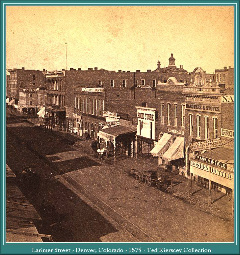 Denver, Colorado was one option. The Denver Pacific railway line would have been in place, and the city was a major stopping point for travelers. I decided the lads would have spent time here, especially between “jobs,” but would have eventually settled on an even larger city as their permanent base of operations.
Denver, Colorado was one option. The Denver Pacific railway line would have been in place, and the city was a major stopping point for travelers. I decided the lads would have spent time here, especially between “jobs,” but would have eventually settled on an even larger city as their permanent base of operations.
San Francisco in the 1870’s rivaled New York City. Around 150,000 people called the city home, and Kye and Chance would have been able to blend right in. Plus, San Francisco was a modern wonder, with paved streets, gaslights, an excellent public transport system, and even skyscrapers.
It wasn’t too hard to pick the lads’ home city once I started looking at old photographs. They’d have gone for the bright lights and 24-hour entertainment.
HERE’S a good page on the 1870’s – Pop Culture!
HERE’S a great reference for anyone writing about historic California – A La California: A Sketch of the Golden State, by Col. Albert S. Evans
HERE’S another good list of names from the 1800’s – ship’s passenger lists (back before privacy laws!)
Found THIS little gem while researching the lads’ trip to New York. A letter by a fellow traveling from New York to San Francisco during the right time period. Don’t you just love the internet?
